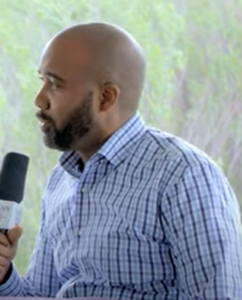Tax Relief Courtesy of Hurricane Harvey

While Hurricane Harvey continues to devastate the Gulf Coast, Texans can expect to receive a little extra relief this upcoming tax year from Uncle Sam. Taxpayers in the federally declared disaster area have the option of claiming disaster-related casualty losses for either the year that the event occurred or the year prior. This means that those whose homes were affected by wind or flood damage can deduct the damages from either this year or the last year’s tax returns. In many cases, amending last year’s returns results in an immediate tax refund which can be then used to live on or begin repairs. However, the option of amending last year’s return may not be for everyone since the IRS does have two rules that must be followed for casualty claims. The first is that the amount of damage claimed must first be deducted by $100. Then the total casualty losses must be reduced by 10% of your adjusted gross income. If you qualify for writing off a loss the process is fairly simple. First, you will need the proper forms. These are the long Form 1040, Form 4684 to determine and report your casualty loss and Schedule A to itemize your loss deduction. If you are planning on amending your 2016 return you will need to use Form 1040X instead of the long Form 1040. You will then need to determine how the damages incurred have affected your property’s fair market value. This is done through determining how much your property is worth immediately prior to the disaster and comparing it to what it is worth immediately after the disaster. The latter part of this will need to be through a professional appraiser. The difference between these two amounts is your loss from casualty. You can then utilize Form 4684 to determine the deductible amount of your casualty loss.
If you have insurance on your property you must first file a claim to use the damage as a casualty loss. Any money that you receive from the insurance company must then be deducted from the casualty loss amount. All insurance payments must be used to repair, or replace your property or any excess could be counted as a taxable gain to you.
Throughout all of this remember to keep documentation of everything! While the IRS may give disaster victims some leeway, they do require that casualty losses be substantiated and supported. This will also be of great value to you if you ever get audited in the future.
Consult with your tax advisor to determine which option would be best for you and your family.
For more on how to claim your casualty losses (click here).
Workplace Accountability in Four Steps
Have you encountered a co-worker, boss or employee, who slacks off, unloads their work onto others, or takes credit for work and ideas that are not their own? Accountability in the workplace can often seem a bit too scarce, especially when the competitive drive kicks in. Or perhaps, someone that works hard, but never seems…
What’s Love Got to do with Leadership?
What is the most important attribute of a good leader? While it is difficult to single out one overarching attribute, according to leadership author, Lolly Daskal, “The single most important factor that differentiates a good leader from a great leader is LOVE.” Truly exceptional leaders know how to lead with love. One of the main…
Raamel Mitchell
Episode Transcript of: Raamel Mitchell Alan Olsen: I’m here today with Raamel Mitchell from Microsoft welcome. Raamel Mitchell: It’s great to be here with you Alan. Alan Olsen: So Raamel for the listeners, can you give the background of your work experiences start from college on and how you got to where you…
The Untold Story of the Internet | Rob Ryan
Transcript: Alan Olsen: I’m with Rob Ryan here today, and Rob is a co-founder of Ascend Communications, which, which had a great influence on establishing what we now know is the internet. Rob, it’s good to be with you today. Rob Ryan: Good to be with you as well. Alan Olsen: So Rob,…




